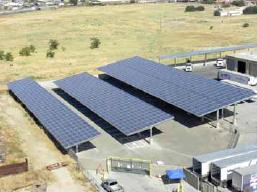
Foster Farms Dairy, the largest privately owned dairy operation in California, has made another strategic move into organic products, as Alan Swaby learns.
When the nation is feeling flush, many marginal businesses survive thanks to there being enough consumers around who are prepared to pay a hefty premium for goods they perceive as being more luxurious or of higher quality. But when belts are tightened as they were a couple of years ago, convincing those consumers to continue paying that premium, particularly for discretionary products, becomes a whole different matter. For some companies, such as Fernbridge-based Humboldt Creamery—a farmers’ cooperative selling organic dairy products in Northern California at prices as much as 100 percent higher than the conventional equivalent—business becomes unsustainable.
But when Humboldt filed for bankruptcy in 2009, Foster Farms Dairy, another California operation, saw the benefit of the Humboldt brand name and the capital assets that went with it. “Humboldt was a much smaller operation than ours,” explains Foster Farms’ operations vice president Jeff Fowler, “but the ice-cream-making side of their business was three times the size of ours. Together with Dairy Farmers of America, we put in an offer for Humboldt and took control in August last year.”
In the process, very little collateral damage has been suffered. Northern California’s organic diary farmers still have an outlet for their milk through Dairy Farmers of America, and the 100-strong workforce at Humboldt is largely unchanged. At the same time, greater coverage has been achieved for Humboldt products thanks to Foster’s more developed distribution network.
On top of the $20-plus million price tag Foster had to pay, another couple of million has been invested in plant improvements at Fernbridge. But the purchase has given Foster the opportunity to rationalize a good number of production lines with ice cream largely moving north and some of the smaller-volume Humboldt products now being made in Modesto or Fresno.
A couple of years ago Foster had already made a major marketing decision to phase out the Foster name at the consumer level in favor of the more widely known Crystal brand, which it had previously acquired. Now the Humboldt deal has given Foster even more scope for simplifying its marketing. “We’ve decided that the Humboldt brand will be our brand for premium products, while Crystal will remain the label for everyday products,” Fowler explains.
For the last few years, in parallel with its marketing initiatives, Foster has been on a lean mission, and this philosophy is currently being extended into the Humboldt factory. In certain performance parameters, there is precious little room for improvement at Modesto and Fresno. Deliveries on time and correctness of deliveries are already an amazing 99.8 and 99.7 percent, respectively, and it’s this type of performance that Fowler is trying to achieve at Fernbridge. “Considering the nature of the Humboldt business,” he says, “the workforce has adapted to the new ownership and new ideas remarkably well. There wasn’t much lean thinking around there in the previous regime, but both management and factory floor workers have been quick to see that working more efficiently is part of the process of giving customers the best possible service.”
Foster uses four key factors to measure performance: safety, quality, delivery and cost. Each day, production teams go into a huddle and discuss the previous day’s performance. By closely analyzing what has happened in the short term and historically, bottlenecks can be identified and then resolved with kaizen campaigns.
“We’ve been doing this long enough now,” says Fowler, “to have a structured problem-solving process. But the process depends on accurate and up-to-the-minute information. We keep scorecards all around the plant that show everyone what has been achieved. It brings out the competitive nature of humans. People automatically strive to do better. It’s our job as managers to give them the tools.”
Foster has identified 200 different areas that it rates on a scale of 1 (poor) to 4 (excellent). Each quarter these are measured and the movement in performance tracked. But thanks to this work, the business saved $5 million in costs during 2009.
Shaving cents off the price per gallon to process milk is a painstaking business. As well as the small incremental steps that kaizen brings, Foster is also prepared to invest in capital improvements. Just a couple of weeks ago a new $5 million solar energy system came on stream after installing carports at the Modesto plant covered in solar panels. “It’s only going to contribute 1 percent of the energy we use here,” says Fowler, “but thanks to rebates and federal grants, this investment will pay for itself in just four years.”
Other small steps taken include a new dissolved air filtration system designed to take solids out of the waste produced by the dairy and make disposal both easier and cheaper. At the same time, the plant is working under new low-energy lights that have replaced the more expensive incandescent lighting.
The Humboldt acquisition has added around $80 million to Foster’s $500 million turnover and opened new geographical areas previously not served. The company is now considering how it can tackle Southern California, and after that, the feasibility of taking ice cream and some of the longer-life products national. Foster now has some co-packing products with eastern producers, and it’s working on how the arrangements can be reciprocated.
In the meantime, directors of the company are strengthening the middle and upper management with the best people they can find—making several new professional appointments as well as identifying and promoting talent from within.
“As soon as the economy recovers,” says Fowler, “we believe sales of Humboldt’s organic products will bounce back, and we want to be ready to take the best advantage of that rebound.” www.fosterdairyfarms.com













